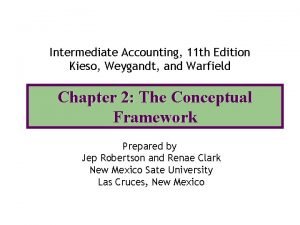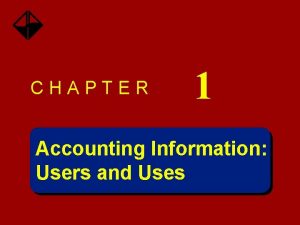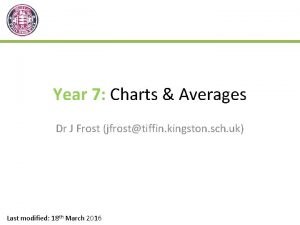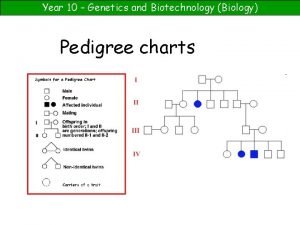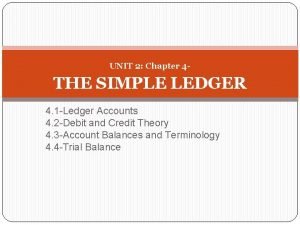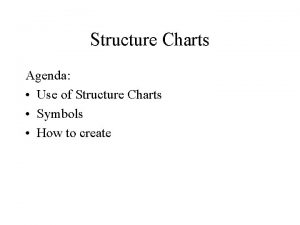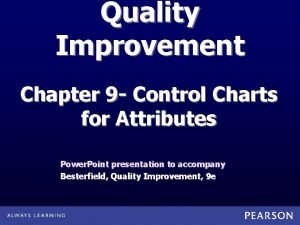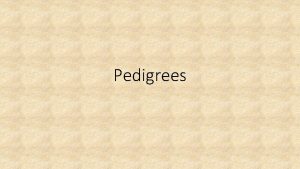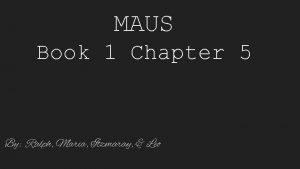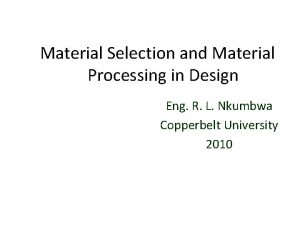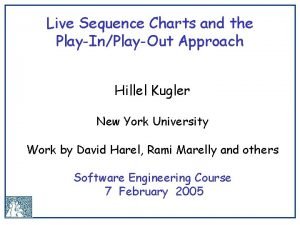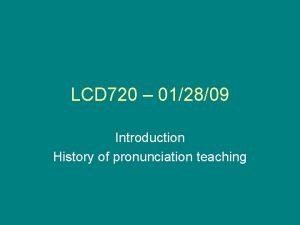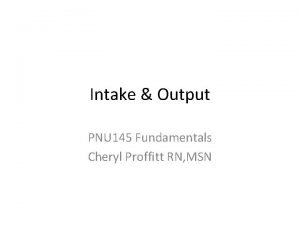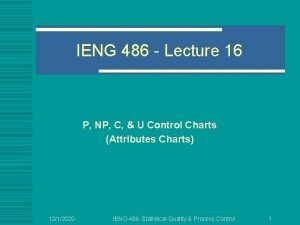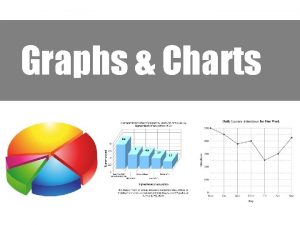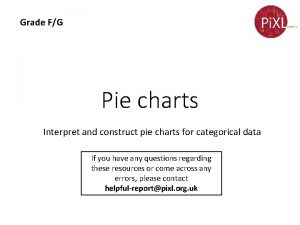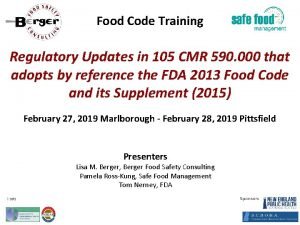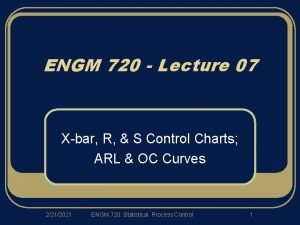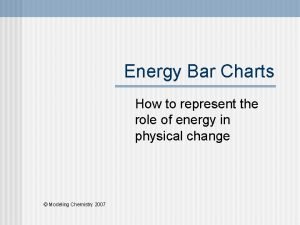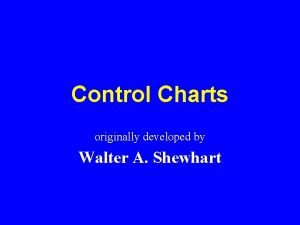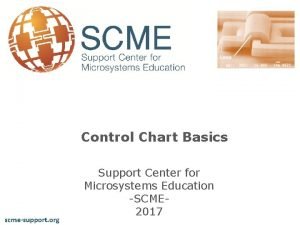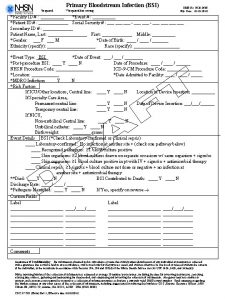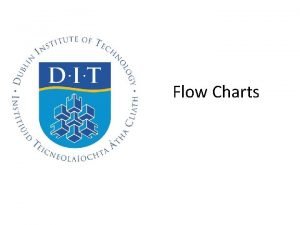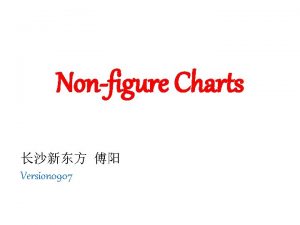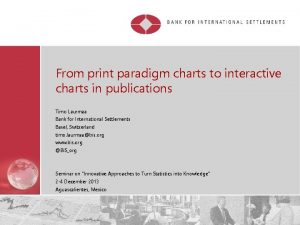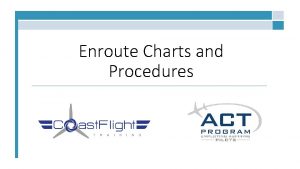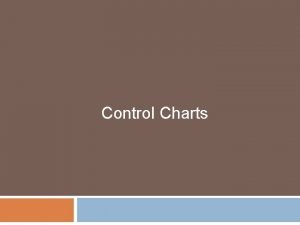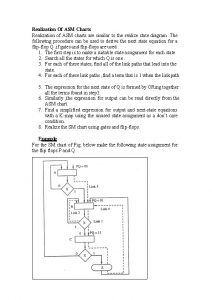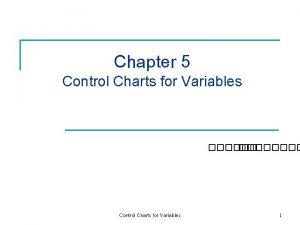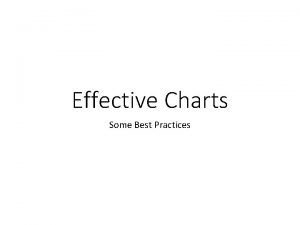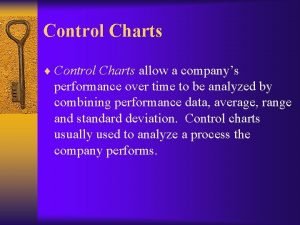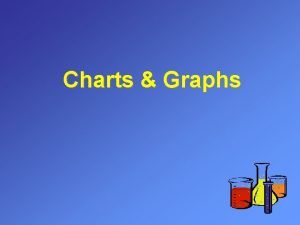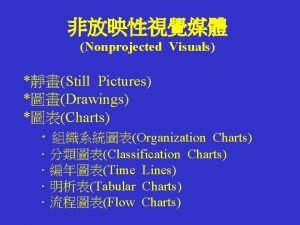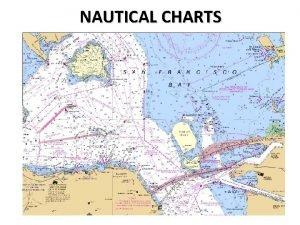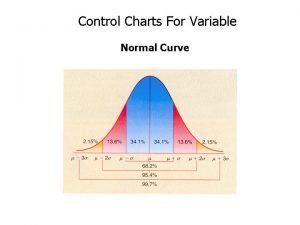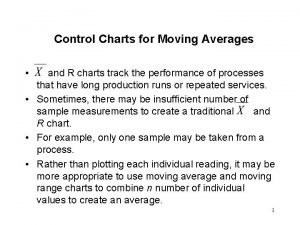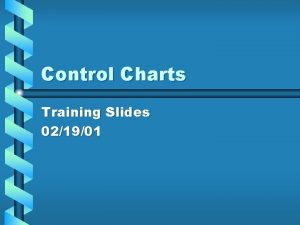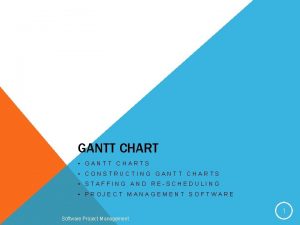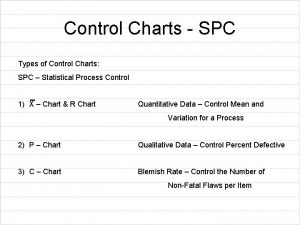RECORDING TECHNIQUES RECORDING TECHNIQUES CHARTS Primary Information required




































- Slides: 36

RECORDING TECHNIQUES

RECORDING TECHNIQUES CHARTS Primary Information required on the chart Adequate description of activities Chart for present or proposed method Specific reference to when the activities will begin & end If applicable, time & distance scales Name of person & date 16

RECORDING TECHNIQUES CHARTS Macro-motion charts Operation/Outline process chart Flow process chart Multiple activity chart Two handed process chart 17

RECORDING TECHNIQUES CHARTS Operation/Outline process chart • Record major activities & inspections • Operation & Inspection symbol used 18



Draw an operations flow chart for Hamburger

RECORDING TECHNIQUES CHARTS Flow process chart • Material type • Man type • Equipment type 21

22

23

24

RECORDING TECHNIQUES CHARTS Flow process chart usefulness: • Reduce travel distance of man/material • Avoid waiting time & unnecessary delays • Reduce cycle time by combining or eliminating operations • Fix up the sequence of operations • Relocate the inspection stages 25

FLOW PROCESS CHART SYMBOLS

RECORDING TECHNIQUES CHARTS Two handed process chart (Operator process chart) • Records activity of workers hand • Representing sequence of manual activities of the worker • Studies work station layout & repetitive task Inspection – touch/feel by hand is to be recorded 26 Storage – hand used as a grip or vice to hold the object


RECORDING TECHNIQUES CHARTS Multiple activity chart • Activities of more than one subject (man or equip. ) are each recorded on a common time scale to show their inter-relationship • Study idle time of man & machines • Determing number of machines handled by one operator • Determing number of operator required in teamwork to perform given job 28

29

MICRO-MOTION STUDY Micro-motion/Therbligs Technique of recording and analyzing the timing of basic elements of an operation Developing best possible pattern of movement; operator performing @ minimum effort and fatigue, for repeated operations Consists of taking motion pictures of the operation with a clock in the picture (or with 30 a video camera running at a known speed)

MICRO-MOTION STUDY Micro-motion/Therbligs The speed of the camera used ranges from 960 to 1000 frames per minute. But faster cameras may be used to study very fast hand motions or complex operations. Micromotion study should be used when it is economical to do so (short cycle highly repetitive operations, large volume production or operation performed by a large number of 31 workers)

MICRO-MOTION STUDY Therbligs 32

MICRO-MOTION STUDY Therbligs Search (SH) – attempt to find an object using eyes or hand Find (F) – mental reaction at end of search Select (ST) – choose among several objects in a group Grasp (G) – grasp an object Hold (H) – hold an object Transport loaded (TL) – move an object with hand arm Transport empty (TE) – reach for an object Position (P) – position object in defined location Assemble (A) – join two parts Use (U) – manipulate a tool Disassemble (DA) – separate multiple parts that were previously joined Inspect (I) – determine quality of object Pre-position (PP) – position object for next operation Release load (RL) – release control of an object Unavoidable delay (UD) – waiting due to factors beyond worker control Avoidable delay (AD) – worker waiting Plan (PN) – decide on an action Rest (R) – resting to overcome fatigue 33

MICRO-MOTION STUDY Micro-motion study involves the following steps: 1)Filming the operation to study 2)Analysis of the data from the films 3)Making recording of the data (using SIMO chart) 34

MICRO-MOTION STUDY SIMO chart format: (SImultaneous MOtion cycle chart) 35

MICRO-MOTION STUDY Provides a permanent record of motion study on films. A large number of operators can see the procedure at any time even after the completion of motion study work. Films can easily reveal the difference between the present and the proposed technique. Films can be demonstrated to large work force at any desired speed. It provides very accurate time for each operation 3 o 6 r motion in comparison to stop watch time study.

MICRO-MOTION STUDY It helps in making detailed and accurate analysis of the prevailing technique. To study the activities of the machine and the operator. To impart training to the workers or operators regarding motion; economy so that unnecessary movement by the workers may be avoided. To study the relationship between the activities of operator and the machine. 37 To obtain motion time data for developing synthetic time standards for various elements.

MEMO-MOTION STUDY In memomotion study, the camera speed is at 60 or 100 frames per minute It is a form of time lapsed cine-photography Time interval lies b/w 1/2 sec to 4 sec 10 or 20 min. may be compressed into 1 min 38

RECORDING TECHNIQUES DIAGRAMS Diagrams Indicates the path of movement Study of traffic & frequency over different routes of plant Identification of back-tracking & obstacles during movements Study of different layout plans & select optimal layout 39

RECORDING TECHNIQUES DIAGRAMS Flow Diagram 1)Layout of w/p is drawn to scale 2)Relative positions of m/c tools, work benches, etc are marked 3)Path followed by the subject under study is traced by drawing lines 4)Each movement is serially numbered and indicated by arrow for direction 5)Different colors are used to denote different typ 4 e 0 s of movements

41

RECORDING TECHNIQUES DIAGRAMS String Diagram String/Thread is used to measure the distance Records the pattern of movement of a worker working within a limited area during a certain period of time Repetitive movements can be conveniently traced 42

RECORDING TECHNIQUES DIAGRAMS String Diagram 1)Layout of the w/p or factory is drawn to scale on a soft board 2)Pins are fixed into boards to mark the location of work stations, 3)Pins are also driven at the turning point of the routes 4)A measured length of thread is taken to trace the movement (path) 5)The distance covered by the object is obtained by 43 measuring the remaining part of the thread and subtracting it from the original length


45

RECORDING TECHNIQUES DIAGRAMS Cycle graph & Chronocycle graph Both records the motion path of an operator & requires filming equipment Movements which are very fast and very difficult for the human eye to trace are traced by these techniques 46

RECORDING TECHNIQUES DIAGRAMS Cycle graph Indicates a permanent record of the motion pattern employed in the form of a closed loop of continuous line. It does not indicate the direction or speed of motion. 47

RECORDING TECHNIQUES DIAGRAMS Chronocycle graph Indicates short dashes of line spaced in proportion to the speed of the body member photographed Wide spacing would represent fast moves while close spacing would represent slow moves Jumbling of dots at one point would indicate fumbling or hesitation of the body member Used to study the motion pattern as well as to compute 48 velocity, acceleration and retardation experienced by the body member at different locations.
 The primary pigments are _____ the primary colors.
The primary pigments are _____ the primary colors. Intermediate accounting kieso
Intermediate accounting kieso Primary care information project
Primary care information project Primary users of accounting information are accountants
Primary users of accounting information are accountants Autobiography using primary sources
Autobiography using primary sources Fonctions techniques et solutions techniques
Fonctions techniques et solutions techniques Dr frost frequency polygons
Dr frost frequency polygons Pedigree biology
Pedigree biology Lclk charts
Lclk charts The simple ledger chapter 4
The simple ledger chapter 4 In structure charts modules are described as
In structure charts modules are described as Motivational overview in software testing
Motivational overview in software testing Smarter charts
Smarter charts How to calculate control limits
How to calculate control limits Pie chart gcse questions and answers
Pie chart gcse questions and answers Pedigree rules
Pedigree rules Process strategy in operations management
Process strategy in operations management Maus book analysis
Maus book analysis Process selection charts
Process selection charts Live sequence charts
Live sequence charts Fidel chart silent way
Fidel chart silent way Intake output calculation
Intake output calculation P np c u charts
P np c u charts Graphs and charts
Graphs and charts Vertical pie chart
Vertical pie chart Virtual class meaning in hindi
Virtual class meaning in hindi Allppt.cpm
Allppt.cpm Allppt.com _ free powerpoint templates, diagrams and charts
Allppt.com _ free powerpoint templates, diagrams and charts Where should charts with food code 3-401 be displayed texas
Where should charts with food code 3-401 be displayed texas Alchem charts
Alchem charts Engm charts
Engm charts Energy bar charts
Energy bar charts End times chart
End times chart Noaa enc charts
Noaa enc charts Who invented control charts
Who invented control charts Weco rules for control charts
Weco rules for control charts Compound bar charts worksheet
Compound bar charts worksheet

